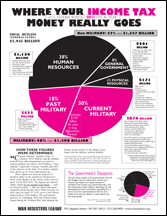The Brookings Institution and the Urban Institute just released its study on Federal Expenditures on Elementary-Age Children in 2008 (Ages 6–11). (download at: http://www.brookings.edu/reports/2010/0415_public_investment_isaacs.aspx
The researchers report they are providing “first-ever estimates of federal expenditures” for this age group, and conclude that “the federal government spent $113 billion in outlays and on reductions in taxes on elementary-age children in 2008.”
It is no easy task to locate all possible federal dollars that are spent on children aged 6-11. Often times, this information may not captured. Medicaid and welfare, for example, do not break down its expenditures based on ages of these children. The researchers acknowledge that they made estimates.
They added up outlays along with what I would call tax expenditures (the taxes that would have been collected if federal tax law did not grant exemptions, tax credits and deductions) to get to their total.
I was surprised to see tax expenditures included here–the $23 billion in reductions in taxes and another $23 billion in refundable portions of tax credits. I have a hard time seeing this as a federal expenditure–there is no clear program or intended purpose specific to these children. The purpose of these tax expenditures is to ease the tax burdens of families. Continue reading »
